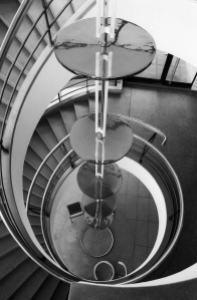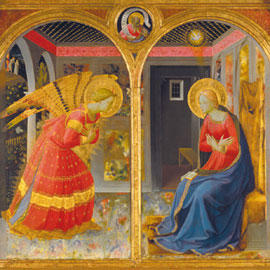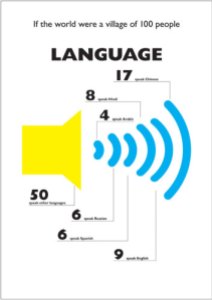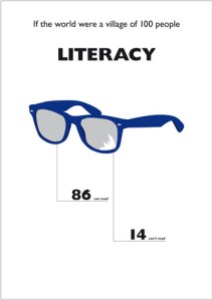 I came across a delightful site yesterday on my web meanderings. If you like architecture and/or the seaside, check it out. It’s called Coastal Treasures, and treasures are indeed what it contains.
I came across a delightful site yesterday on my web meanderings. If you like architecture and/or the seaside, check it out. It’s called Coastal Treasures, and treasures are indeed what it contains.
Coastal Treasures “was set up to enable residents and visitors alike to discover the rich architectural heritage in the Anglo-French cross-border region […] and is part-funded by the European Commission through the Interreg 3a programme”. Interreg III is “designed to strengthen economic and social cohesion throughout the EU […] through cross-border, transnational and interregional cooperation”. Dry euro-language, but in this case with some lovely results.
The cooperating regions here are the south coast of England (Bexhill-on-Sea, Hastings and St Leonards-on-Sea) and the Côte Picardie and evocatively-named Côte d’Opale in northern France.
 The site is a tad content-heavy (I’m itching to grab my red pencil) and the small character-size doesn’t help. But it contains some fascinating architectural background and many visual gems – the Wanderlight project in Hastings, for example, with “19 spellbinding lighting installations”. The fantastical houses in the French resort towns are a delight too, with their extravagantly decorated turrets and gables. Ideas here for the summer holidays?
The site is a tad content-heavy (I’m itching to grab my red pencil) and the small character-size doesn’t help. But it contains some fascinating architectural background and many visual gems – the Wanderlight project in Hastings, for example, with “19 spellbinding lighting installations”. The fantastical houses in the French resort towns are a delight too, with their extravagantly decorated turrets and gables. Ideas here for the summer holidays?
Don’t miss the Architectural links, which will take you to such gems as the National Piers Society or Seaside History web sites, where you can wallow in seaside nostalgia to your heart’s content.
The images here illustrate the rich variety of our seaside architecture, with an exotically decorative beach shelter and a clean-lined modernist staircase in the De La Warr Pavilion, both in Bexhill-on-Sea. They’re courtesy of Barbara Rich, whose beautiful photos you can view in her Flickr photostream
By Marian Dougan
 The Blessed Angelico: The Dawn of the Renaissance – the largest exhibition entirely dedicated to Beato Angelico since 1955 – is at Rome’s Capitoline Museums until 5 July 2009. If you’re planning a visit to Rome this summer, this is a unique opportunity to see these beautiful paintings in one place. And if not, you can view them in Museo in Comune Roma’s wonderful Beato Angelico set on Flickr. For those of you who read Italian, Luisa Carrada discusses the painting shown here, the Annunciation, and its sublime detail in her Mestiere di Scrivere blog post of 16 May. A copywriter and editor with an art history background, Luisa describes the painting much more eloquently than I ever could.
The Blessed Angelico: The Dawn of the Renaissance – the largest exhibition entirely dedicated to Beato Angelico since 1955 – is at Rome’s Capitoline Museums until 5 July 2009. If you’re planning a visit to Rome this summer, this is a unique opportunity to see these beautiful paintings in one place. And if not, you can view them in Museo in Comune Roma’s wonderful Beato Angelico set on Flickr. For those of you who read Italian, Luisa Carrada discusses the painting shown here, the Annunciation, and its sublime detail in her Mestiere di Scrivere blog post of 16 May. A copywriter and editor with an art history background, Luisa describes the painting much more eloquently than I ever could. I wrote recently about the
I wrote recently about the 


 I came across a delightful site yesterday on my web meanderings. If you like architecture and/or the seaside, check it out. It’s called
I came across a delightful site yesterday on my web meanderings. If you like architecture and/or the seaside, check it out. It’s called  The site is a tad content-heavy (I’m itching to grab my red pencil) and the small character-size doesn’t help. But it contains some fascinating architectural background and many visual gems – the Wanderlight project in Hastings, for example, with “19 spellbinding lighting installations”. The fantastical houses in the French resort towns are a delight too, with their extravagantly decorated turrets and gables. Ideas here for the summer holidays?
The site is a tad content-heavy (I’m itching to grab my red pencil) and the small character-size doesn’t help. But it contains some fascinating architectural background and many visual gems – the Wanderlight project in Hastings, for example, with “19 spellbinding lighting installations”. The fantastical houses in the French resort towns are a delight too, with their extravagantly decorated turrets and gables. Ideas here for the summer holidays?